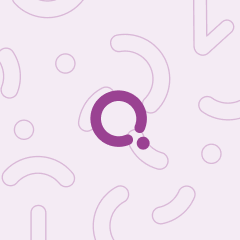
Human Body Adaptation
Flashcard
•
Health Sciences
•
University
•
Practice Problem
•
Hard
Denize Silva
FREE Resource
Student preview

15 questions
Show all answers
1.
FLASHCARD QUESTION
Front
Function of Golgi tendon organs.
Back
Operate as a tensiometer (measuring tension).
2.
FLASHCARD QUESTION
Front
Increase in the speed of neuromuscular spindle excitation.
Back
Enhances the response time of muscles.
3.
FLASHCARD QUESTION
Front
Increase in creatine phosphokinase, myokinase, phosphofructokinase enzymes
Back
Neuromuscular training increases the levels of enzymes like creatine phosphokinase, myokinase, and phosphofructokinase.
4.
FLASHCARD QUESTION
Front
Increase in mineral content and bone density
Back
Neuromuscular training increases mineral content and bone density.
5.
FLASHCARD QUESTION
Front
Physiological adaptations of neuromuscular training
Back
Neuromuscular training leads to various physiological adaptations, including increased muscle size, enzyme levels, and metabolism.
6.
FLASHCARD QUESTION
Front
Impact on VO2max
Back
Neuromuscular training improves VO2max, especially in circuit resistance training.
7.
FLASHCARD QUESTION
Front
Skeletal muscle adapts to training by increasing its size.
Back
The adaptation occurs through the increase in muscle size and biochemical processes.
Create a free account and access millions of resources
Create resources
Host any resource
Get auto-graded reports

Continue with Google

Continue with Email

Continue with Classlink

Continue with Clever
or continue with

Microsoft
%20(1).png)
Apple
Others
Already have an account?
Similar Resources on Wayground

15 questions
016_Obfuscation - CompTIA Security+ SY0-701 - 1.4
Flashcard
•
12th Grade

15 questions
A&P Unit 6 Workbook: Muscular System
Flashcard
•
12th Grade

15 questions
Muscular System Anatomy
Flashcard
•
12th Grade

10 questions
Business of Retail 1.1 Welcome to Retail Knowledge Check
Flashcard
•
12th Grade

15 questions
UNIT 57:Unconscious bias
Flashcard
•
University

15 questions
EXAM 3 - College A&P 1
Flashcard
•
University

15 questions
Neurological Disorders Flashcard
Flashcard
•
University

10 questions
6th Seniors - Prepositional Phrases 4
Flashcard
•
11th Grade - University
Popular Resources on Wayground

10 questions
Forest Self-Management
Lesson
•
1st - 5th Grade

25 questions
Multiplication Facts
Quiz
•
5th Grade

30 questions
Thanksgiving Trivia
Quiz
•
9th - 12th Grade

30 questions
Thanksgiving Trivia
Quiz
•
6th Grade

11 questions
Would You Rather - Thanksgiving
Lesson
•
KG - 12th Grade

48 questions
The Eagle Way
Quiz
•
6th Grade

10 questions
Identifying equations
Quiz
•
KG - University

10 questions
Thanksgiving
Lesson
•
5th - 7th Grade
Discover more resources for Health Sciences

10 questions
Identifying equations
Quiz
•
KG - University

7 questions
Different Types of Energy
Interactive video
•
4th Grade - University

20 questions
HS2C2 AB QUIZIZZ
Quiz
•
1st Grade - Professio...

14 questions
Homonyms Quiz
Quiz
•
KG - University

16 questions
Parts of a Parabola
Quiz
•
8th Grade - University

10 questions
A Brief History of Geologic Time
Interactive video
•
11th Grade - University

15 questions
Black Friday/Cyber Monday
Quiz
•
9th Grade - University

7 questions
Biomolecules (Updated)
Interactive video
•
11th Grade - University